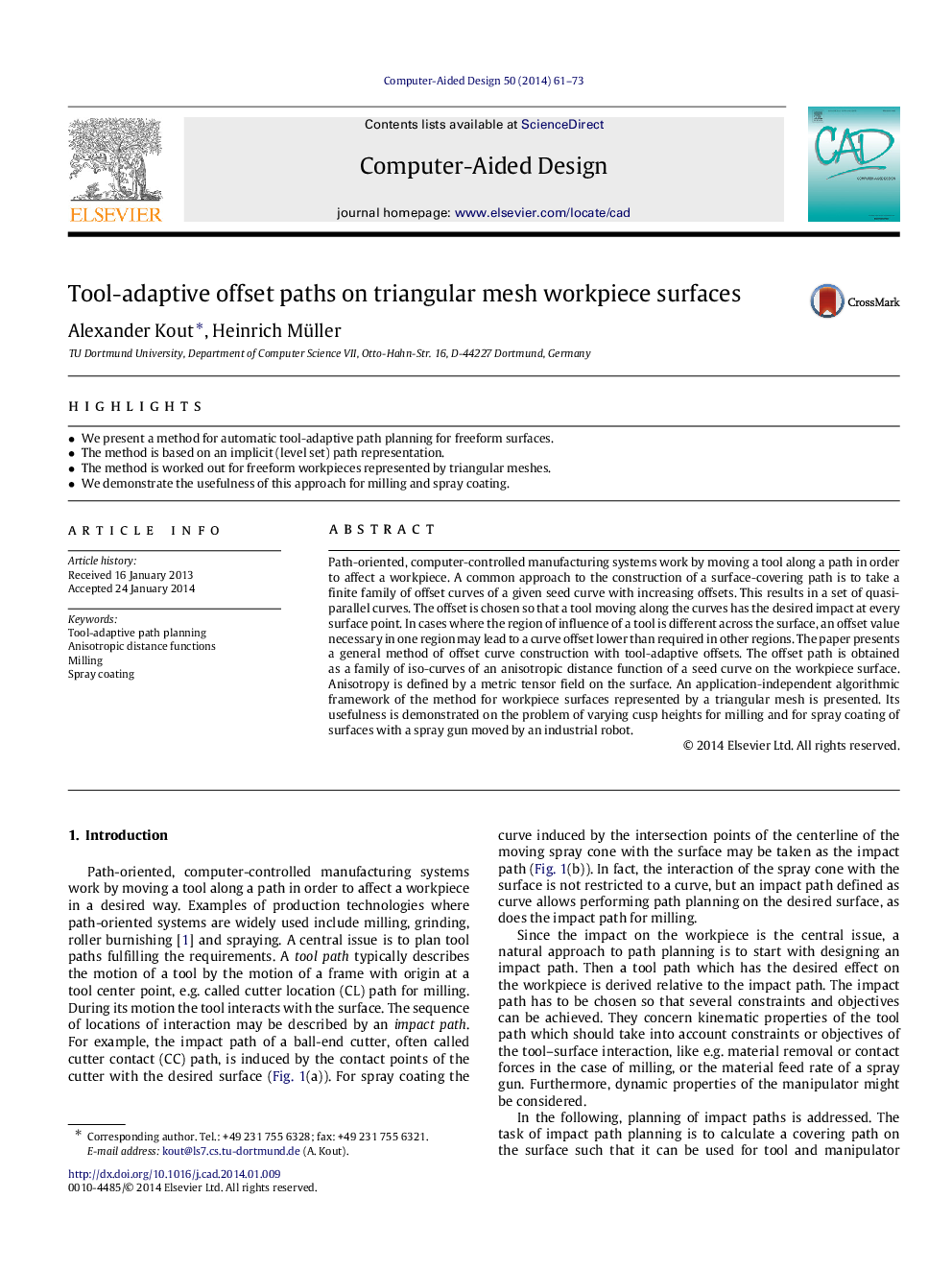| کد مقاله | کد نشریه | سال انتشار | مقاله انگلیسی | نسخه تمام متن |
|---|---|---|---|---|
| 440089 | 690964 | 2014 | 13 صفحه PDF | دانلود رایگان |
• We present a method for automatic tool-adaptive path planning for freeform surfaces.
• The method is based on an implicit (level set) path representation.
• The method is worked out for freeform workpieces represented by triangular meshes.
• We demonstrate the usefulness of this approach for milling and spray coating.
Path-oriented, computer-controlled manufacturing systems work by moving a tool along a path in order to affect a workpiece. A common approach to the construction of a surface-covering path is to take a finite family of offset curves of a given seed curve with increasing offsets. This results in a set of quasi-parallel curves. The offset is chosen so that a tool moving along the curves has the desired impact at every surface point. In cases where the region of influence of a tool is different across the surface, an offset value necessary in one region may lead to a curve offset lower than required in other regions. The paper presents a general method of offset curve construction with tool-adaptive offsets. The offset path is obtained as a family of iso-curves of an anisotropic distance function of a seed curve on the workpiece surface. Anisotropy is defined by a metric tensor field on the surface. An application-independent algorithmic framework of the method for workpiece surfaces represented by a triangular mesh is presented. Its usefulness is demonstrated on the problem of varying cusp heights for milling and for spray coating of surfaces with a spray gun moved by an industrial robot.
Journal: Computer-Aided Design - Volume 50, May 2014, Pages 61–73
